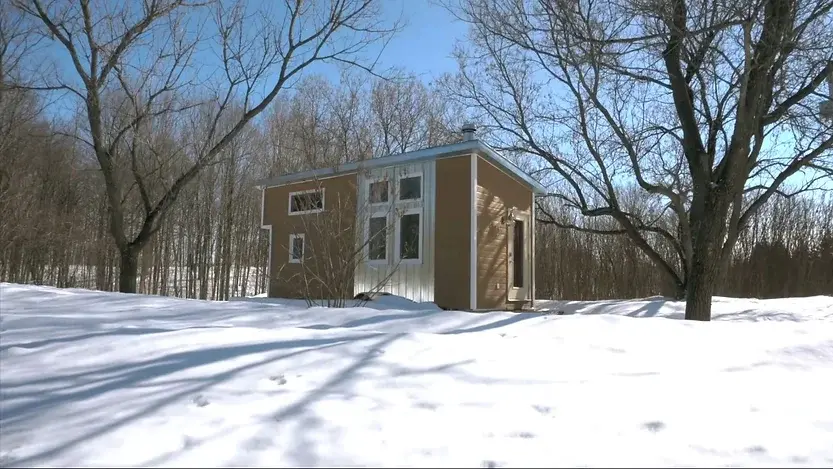Pat and Mel built their off-grid tiny house to stop paying rent and live a simpler, minimalist life. They lived in it for 3 years on a friend’s land. Recently, they decided to sell the tiny home and buy a house because it turned out to be cheaper than buying land.
It might sound strange, but here’s why: in Ontario, the down payment for land is often 35%, while the down payment for a house can be as low as 5%. So, even though the house costs more than the land, it’s easier to buy the house.
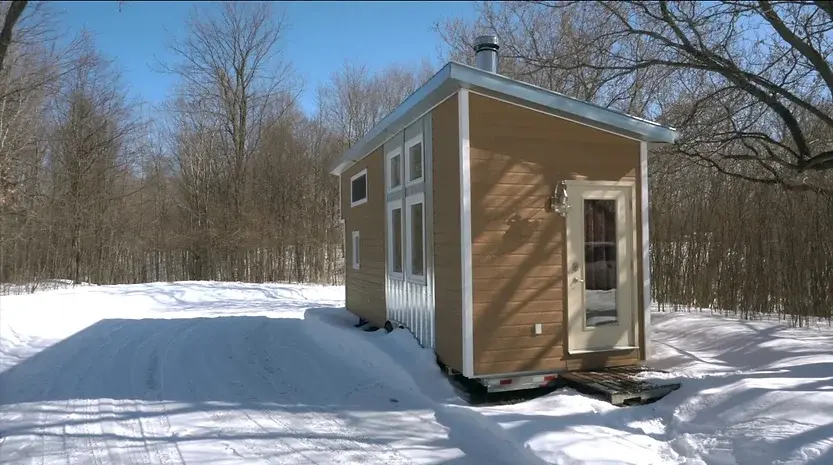
Pat and Mel built their tiny house themselves, making it fully off-grid. They used a wood stove for heat, solar panels for electricity, propane for hot water and cooking, and collected rainwater for all their water needs.
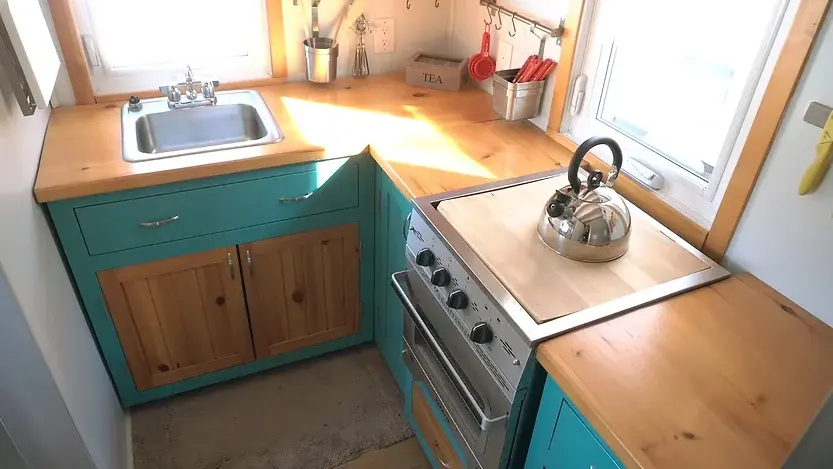
This is the first tiny house we’ve seen that uses 100% rainwater collection, and here’s how they did it: They added a gutter to the side of the house and collected rainwater in four barrels. The barrels had screens to catch leaves and other debris that might wash down the spout.
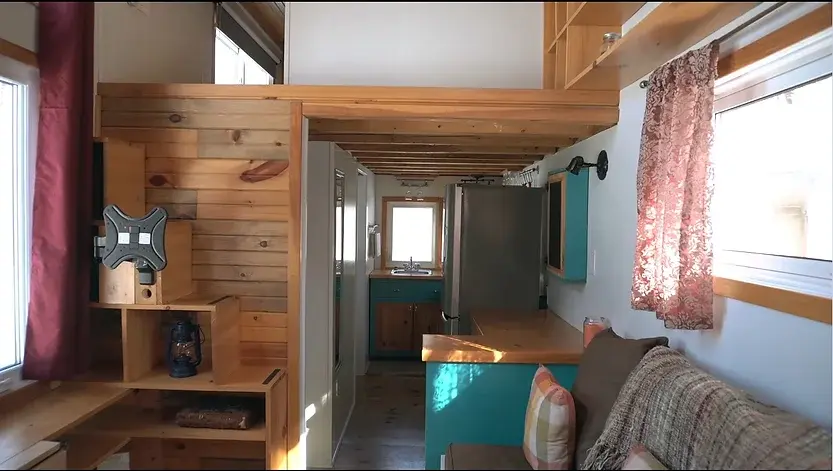
When the barrels were full, they used a sump pump to move the water into a large holding tank inside a trailer next to the house. They kept the water tank in the trailer so they could heat it in winter and prevent the water from freezing.
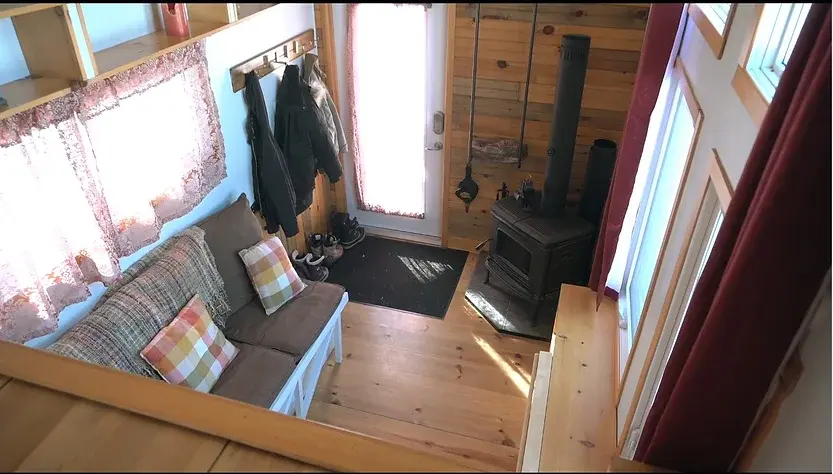
To move the water from the trailer into the house, Pat and Mel used an RV water pump. They pumped the water through a pipe that was insulated and heated. To keep the water clean, they added about two tablespoons of bleach to each barrel of rainwater before putting it in the main tank.

Living in a tiny house helped Pat and Mel save money and live with only the essentials, which they really enjoyed. They felt they didn’t waste time or money buying things they didn’t need. However, they did face some challenges.
During their first winter, the pipe between the trailer and house froze, leaving them without water for a week. They also found it hard to entertain large groups or host dinner parties in such a small space.
